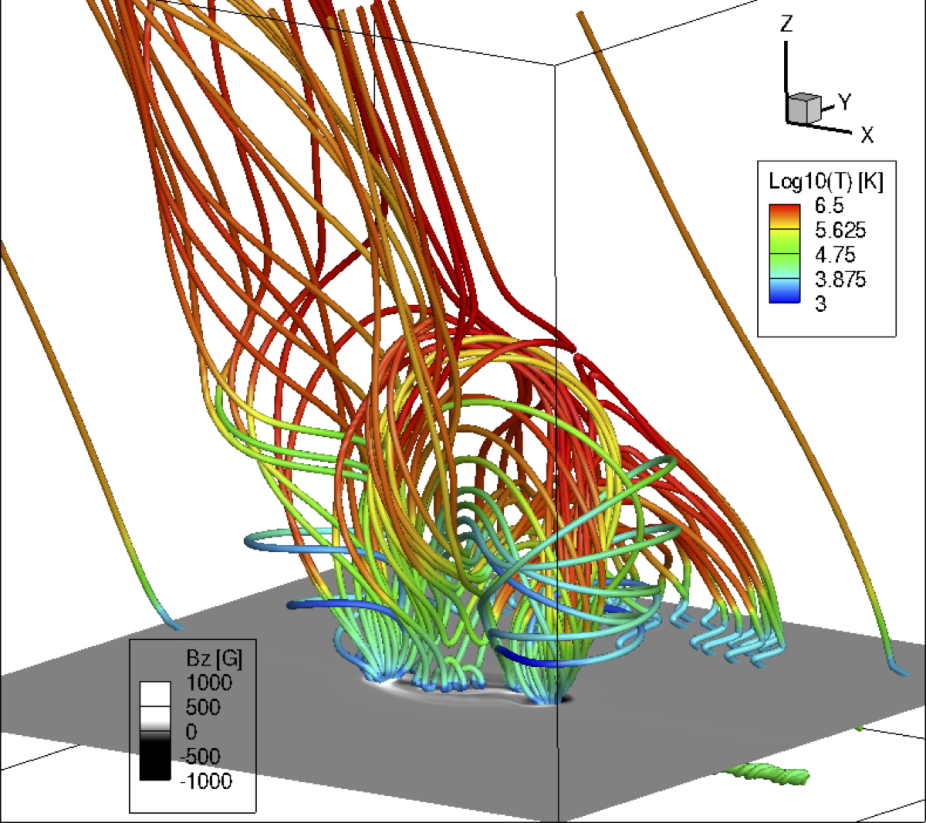
3D MHD simulation of the emergence of a twisted magnetic flux tube from the top layer of the convection zone into the solar corona with a pre-existing open magnetic field, resulting in the formation of a corona magnetic flux rope that reconnects with the ambient open magnetic field and the development of a rotating "blow-out" jet. The Figure shows the 3D magnetic field with field lines colored by temperature. The horizontal cross-section corresponds to the photosphere with grey-scale image showing the vertical magnetic field. In this paper, the photosphere magnetic and velocity field from the simulation are used as synthetic observations for the validation of the PDFI_SS inversion method for inferring the photosphere electric field from a sequence of vector magnetograms and Doppler velocity measurements.
The Astrophysical Journal—A.N. Afanasyev, M.D. Kazachenko, Y. Fan, G.H. Fisher, and B. Tremblay
Knowledge of electric fields in the photosphere is required to calculate the electromagnetic energy flux through the photosphere and set up boundary conditions for data-driven magnetohydrodynamic (MHD) simulations of solar eruptions. Recently, the PDFI_SS method (Fisher et al. 2020) for inversions of electric fields from a sequence of vector magnetograms and Doppler velocity measurements was improved to incorporate spherical geometry and a staggered-grid description of variables. The method was previously validated using synthetic data from anelastic MHD (ANMHD) simulations. In this paper, we further validate the PDFI SS method, using approximately one–hour long MHD simulation data of magnetic flux emergence from the upper convection zone into the solar atmosphere. We reconstruct photo- spheric electric fields and calculate the Poynting flux, and compare those to the actual values from the simulations. We find that the accuracy of the PDFI SS reconstruction is quite good during the emergence phase of the simulated ephemeral active region evolution and decreases during the shearing phase. Analysing our results, we conclude that the more complex nature of the evolution (compared to the previously studied ANMHD case) that includes the shearing evolution phase is responsible for the obtained accuracy decrease.